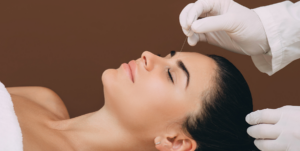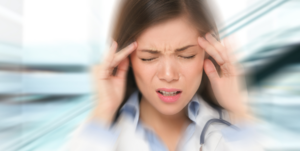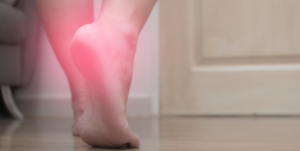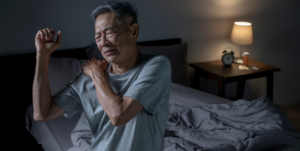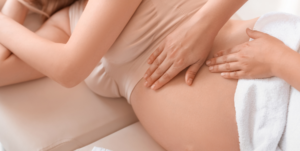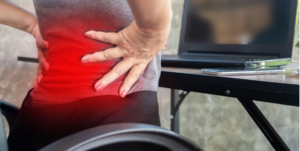As people say, our body is one of life’s great gifts. But it’s a gift that we tend to take for granted until we start to have health complications that hinder our mobility.
Knee arthritis is one of the most common conditions that affect people’s ability to walk comfortably and inhibit normal activities. While surgery is often considered for late-stage knee arthritis, you don’t always need a total knee replacement for arthritis-related knee pain. Non-surgical treatments like physical therapy, TCM, and injections can be effective in managing pain and improving function especially at the earlier stage. Surgery should be considered as a last resort for patients who have tried all conservative treatment options.
In this article, we’ll explore some of the most effective non-surgical treatments to manage knee arthritis and knee pain, or to avoid the need for surgery altogether.
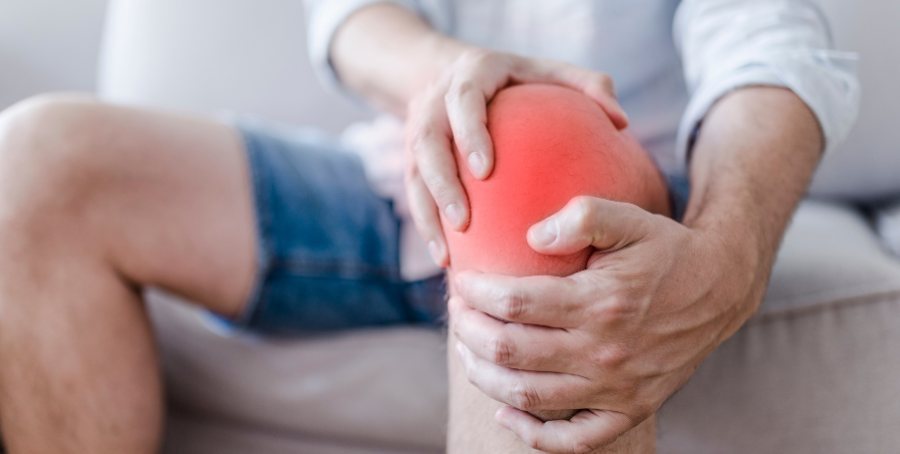
What is knee arthritis?
Knee arthritis is the inflammation and deterioration of the knee joint cartilage, which is a cushioning portion between the ends of your bones to allow your knee to move smoothly. When the cartilage wears away, the bones will rub against each other, causing pain.
The most common form of knee arthritis is osteoarthritis, which is the gradual tearing degradation of your knee cartilage due to ageing. But contrary to popular beliefs, knee arthritis can affect the young as well. An attack on the knee cartilage, such as a traumatic impact or an immune response can weaken the joints too.
Those with knee arthritis often experience swelling, pain, stiffness, and limited mobility in the knees, which can make it difficult to move around and perform everyday activities. Overtime, the lack of movement can lead to weight gain and a decline in overall health. Worse, chronic pain can affect one’s mental health as well, increasing the likelihood of depression and anxiety.
Fortunately, there are a range of treatments for knee arthritis.
What are some non-surgical treatments for knee arthritis?
Lifestyle modifications
A key part to recovery is to reduce pressure on the knee while strengthening the joints and muscles. A long-term strategy Is a healthy lifestyle that includes exercise and a good diet. Start with simple leg stretching, or gentle exercises like yoga, swimming, tai chi, etc. Incorporate greens into your diet and try to limit alcohol or oily food intake. Moreover, natural home remedies such as using herbs and acupuncture has also been shown to be effective in reducing knee pain and swelling while promoting knee recovery.
Anti-inflammatory medications
Anti-inflammatory medications may be recommended by doctors to reduce any inflammation, swelling, or pain in the knee. These pain medications may include non-steroidal anti-inflammatory drugs (NSAID) like aspirin, ibuprofen, and naproxen. They work by blocking the activity of an enzyme called cyclooxygenase (COX). COX plays a key role in the production of prostaglandins, which are hormone-like substances that promote inflammation, pain, and fever. The downside would be that it has a temporary effect, and long-term use can lead to health implications such as gastrointestinal bleeding. Hence, it is better to complement NSAID with other forms of treatment like physical therapy or acupuncture to limit overreliance on NSAID.
For minimally invasive treatments, doctors may use specialised injections for knee arthritis. These injections contain local anaesthetic, saline and/or corticosteroid, which is an anti-inflammatory agent that is effective in treating muscle spasms, inflammation, and pain in the knee. The effect lasts for a few weeks to months, which can effectively treat mild injuries and allow patients to resume daily activities and/ or engage in exercise therapy to knee mobility. The specialized injection can be done outpatient with no downtime while providing excellent pain relief results.
You may need to seek a consultation with a pain doctor to have a better assessment of your condition and treatments needed.
Platelet-rich plasma (PRP) therapy
Platelet-rich plasma therapy (PRP) is a relatively new treatment that may be recommended by doctors to treat knee arthritis. It involves extracting a concentration of platelets from the patient’s own blood, and injecting it into the injured area, in this case, the knee joint. The platelets contain growth factors that stimulate tissue repair and regeneration. This helps to regrow cartilage surrounding the knee, alleviating pain and improve mobility.
The good thing about PRP therapy is that since it uses our body’s own cells, there is a lower risk of immune infection or other side effects. There have been multiple evidence supporting the effectiveness of PRP therapy for soft-tissue repairs ranging from knee arthritis to Achilles tendon ruptures.
TCM Treatment for Knee Arthritis
Acupuncture
Acupuncture is a form of Traditional Chinese Medicine (TCM) treatment that involves inserting thin needles into specific points of the body to stimulate and rebalance the flow of Qi in the body. According to TCM’s perspective, knee arthritis is caused by Qi deficiency in the kidney, spleen, and liver from the invasion of wind, cold, or heat from the environment or diet. This results in the blockage or stagnation of Qi and blood flow to the knee joint, causing pain. There may also be an accumulation of toxins and waste products in the joints, leading to inflammation.
Acupuncture alleviates these symptoms by restoring the normal flow of Qi and blood through the body’s meridian channels. It also triggers the release of endorphins, our body’s natural pain-relieving hormone. The whole process involves firstly, a consultation with a physician to understand specific causes of your condition to create a targeted treatment plan for you. Following that, the physician will insert thin needles into these acupoints and leave them in place for several minutes, during which you may feel a slight tingling or numbing sensation. During the process, you should also feel a sense of relaxation as well, which makes acupuncture a good therapy for both the mind and body.
Some studies have shown that combining acupuncture with exercise therapy can improve knee joint mobility as well by directing blood flow to the knee, thereby loosening tight muscles around the knee. Acupuncture can be performed complementary to other TCM therapies like cupping and moxibustion to further support the healing process.
Tuina
Tuina is a form of Chinese massage that involves applying pressure on specific parts of the body to remove any Qi blockages and stimulate blood flow. It has similar effects to acupuncture and is typically used alongside acupuncture or as an alternative for people who hate needles.
Cupping
Cupping is another TCM treatment that involves placing special cups onto specific points on the skin to create suction. It draws the skin into the cup, creating a space between the skin and the muscles. This promotes lymphatic circulation, which helps to relieve swelling and inflammation by removing toxins and bringing in immune cells to the affected area to accelerate the healing process. Additionally, cupping promotes the inflow of fresh blood, which helps to relieve pain and stiffness around the knee.
For knee arthritis, dry cupping is usually performed, which involves heating the inside of the cup with an alcohol-soaked cotton ball set aflame. The heat expels oxygen from the cup, creating a vacuum that will suction the skin up when the cup is placed on the body. The cups are typically left on for around 15 minutes, or the practitioner may move the cups around depending on your area of injury. Overall, cupping is useful for treating any inflammation and swelling from knee arthritis.
Moxibustion
Moxibustion is a non-invasive procedure that involves the burning of a herb called mugwort (Arthemisia vulgaris) in the form of a moxa stick over specific points of the body. The heat from the burning can expel coldness from the body and invigorate the flow of Qi, accelerating the recovery process. It is also known to have an anti-inflammatory effect by suppressing the expression of cyclooxygenase (COX), the enzyme that promotes inflammation and swelling. This is a natural alternative to anti-inflammation medications that have a similar mechanism.
At Singapore Paincare TCM, we provide various TCM services ranging from acupuncture, cupping, and moxibustion. Our licensed physicians are well-trained to create a targeted treatment plan best suited for your needs.
For treatments targeted towards improving joint functions, you can consider:
Mobility aids
Mobility aids like braces reduce the pressure on your knee when you move about, facilitating recovery. When one is walking, the compression from the brace helps to take some of the weight off the knee, which supports the strengthening of ligaments and muscles. Additionally, knee braces can provide some trapped heat that improves blood circulation for better healing. As braces come in various shapes, sizes, and styles, it’s important to discuss with a professional to create a customised one for you to prevent any tightness and swelling. For more generalised mobility aids, crutches or canes are equally helpful in assisting mobility without placing too much strain on the knee. At Singapore Paincare TCM, we offer Qi’Walker, which is a light and shock-absorbing pole that can act as a cane to assist your mobility while walking.
Form-fitting shoes
Finding a good pair of shoes is important if you’re exercising, in physical therapy, or just moving around during the day. Having a cushioned midsole and heel can absorb the impact when walking which reduces stress on the knee. Additionally, you can look for a curved sole that helps to redistribute the weight of the body more evenly to avoid placing all the weight on the injured part of your leg.
Kinesiology tape
Kinesiology tape is an elastic tape that supports and stabilises the joints. When the tape is applied, it lifts the skin, which creates a space between the skin and the underlying tissues and muscles. Like cupping, this effect increases blood and lymphatic circulation to the taped area, reduces swelling and inflammation.
The tape can be applied in a ‘Y’ or ‘X’ pattern over the knee for a few days to provide stability, especially during your exercise for other forms of physical therapy.
Conclusion
Overall, there are many non-surgical treatments that you can consider first instead of more invasive surgical methods. The effectiveness of these treatments varies based on individual condition and the severity of knee arthritis. Hence, it’s important to discuss these treatments with your doctor before deciding on a treatment option that is suited to your individual needs.
Get the Appropriate Paincare
At Singapore Paincare TCM Wellness, we integrate a unique east-west approach to maximise the effects of our treatments. Our physicians and therapists undergo multiple training at Singapore Paincare Academy (administered by Singapore Paincare Medical Group) to gain a better understanding of clinical conditions so that together with their TCM expertise, they can help patients recover.




